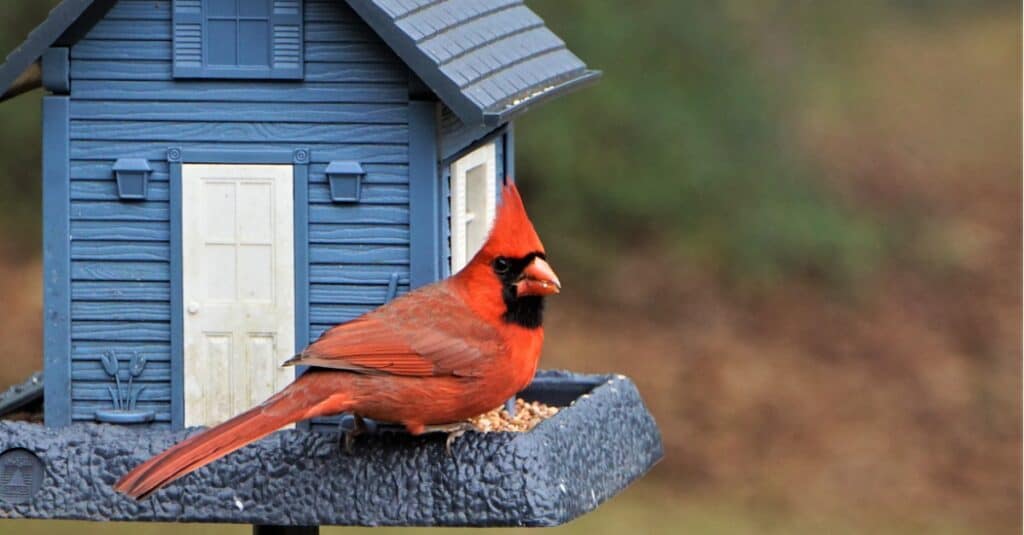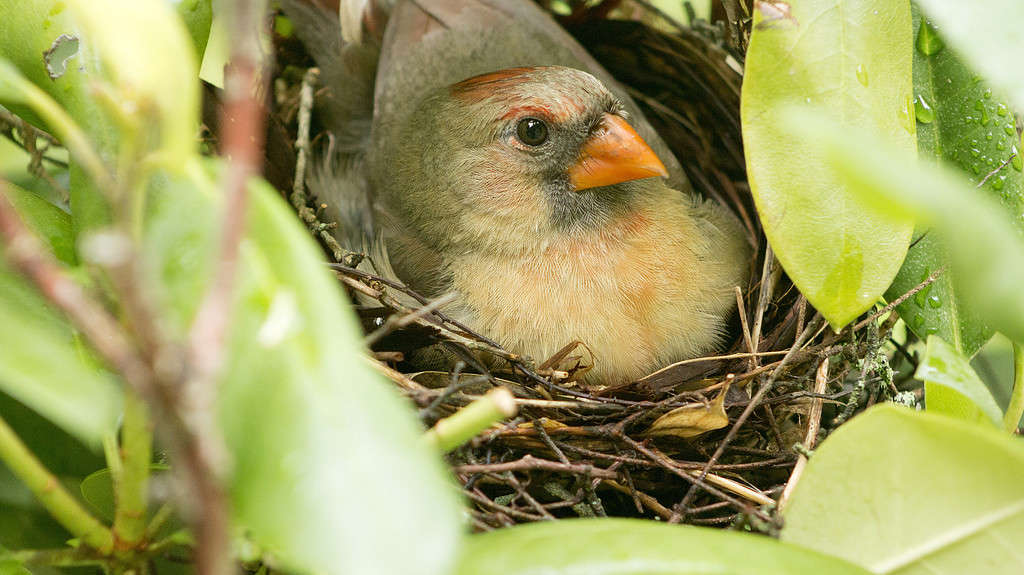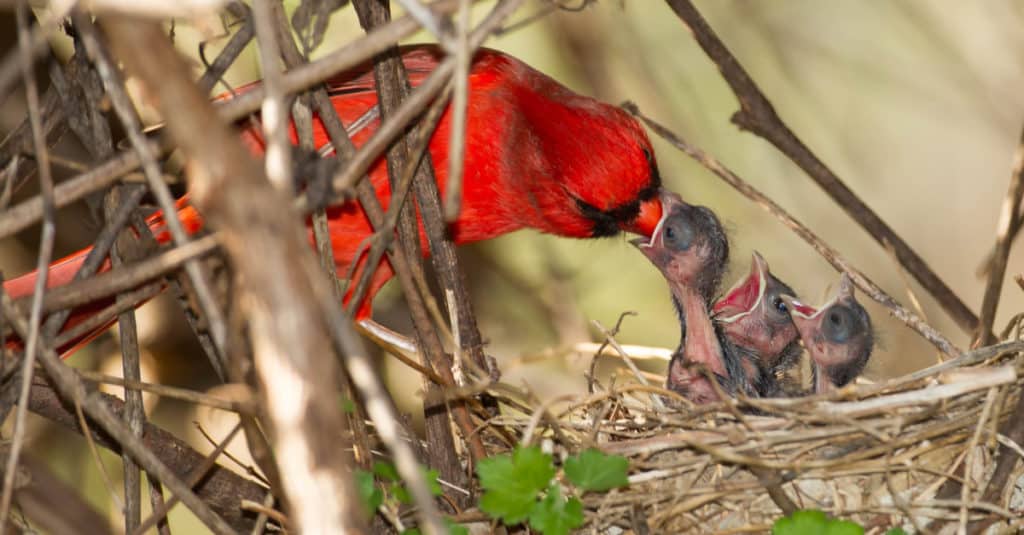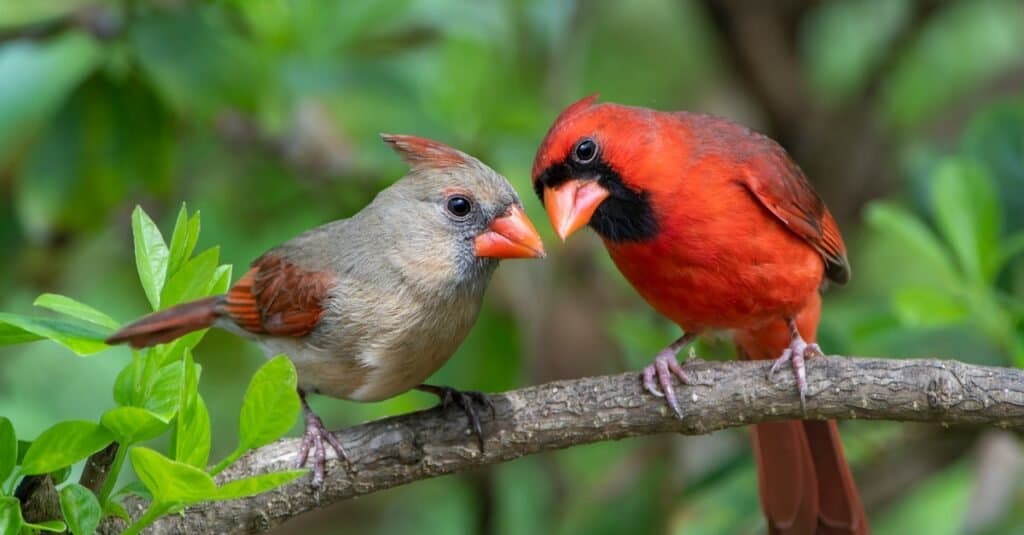The official Illinois State Bird is the Northern Cardinal (Cardinalis cardinalis). A total of seven states have chosen the Northern Cardinal as their official state bird. Illinois chose the species in 1929, shortly after Kentucky named it their state bird in 1926. According to the Illinois Department of Natural Resources, schoolchildren in the state voted to choose the Northern Cardinal as the State Bird of Illinois from a slate of avian candidates. The following states also selected the Northern Cardinal as their state bird: Indiana and Ohio in 1933, North Carolina in 1943, West Virginia in 1949, and Virginia in 1950.

Where Does the State Bird of Illinois Live?
Northern Cardinals range over the entire state of Illinois. These permanent residents stick closely to the same place all year round. They can be found near the edges of forests, in parks and other urban areas, in shrublands and wetlands, and along agricultural areas.
Northern Cardinals have adapted well to life alongside human populations. They are a favorite species of many bird enthusiasts and backyard bird watchers. They do not migrate over winter, though they may leave an area in search of food. As long as Northern Cardinals have access to fresh water and a consistent food supply, they are happy to be your neighbor their whole life.

Cardinals prefer seeds that are high in fat and protein.
©iStock.com/ANCHASA MITCHELL
What Do Northern Cardinals Eat?
Northern Cardinals are omnivores. They eat mostly seeds, berries, and insects. They love seeds from grasses, weeds, and flowers, along with all sorts of berries and other small fruits. At feeders, they prefer bird seed that includes sunflower or safflower seeds, but they are not very picky. Some of their favorite insects include beetles, true bugs, ants, flies, crickets, grasshoppers, butterflies, and other species. They readily dine on caterpillars and arthropods such as spiders, and centipedes, along with worms and snails. Northern Cardinals usually feed their hatchlings and nestlings insects.
Where Do Northern Cardinals Nest?
Northern Cardinals can find plenty of suitable nest sites all over the state of Illinois. The female of the species takes charge of building the nest, while the male actively defends the territory. Northern Cardinals build their nests from April through August. Nest sites include shrubs, small to medium-sized trees, and vegetation such as vines and briars. If you look closely, you may find these colorful birds nesting right in your backyard or along the wooded area of a neighborhood park or playground.
Northern Cardinals generally place their nest at low heights, usually about 3 feet to 10 feet off the ground, but sometimes as high as 20 feet. They build their open cup-shaped nests from readily available materials such as twigs, grasses, bark, leaves, rootlets, and even bits of hair.

Female Northern Cardinals incubate the eggs alone.
©WoodysPhotos/iStock via Getty Images
Northern Cardinal Reproduction
The state bird of Illinois produces between two to four clutches per year. Each clutch averages three to four eggs, but sometimes as few as two or as many as five. The eggs vary in color, from grayish-white to greenish-white with darker irregular speckles of brown. Females incubate the eggs for about 12 to 13 days, then both parents care for the nestlings until they leave the nest in another 9 to 11 days.
Northern Cardinals sometimes fall victim to Brown-Headed Cowbirds. These nest parasites lay their eggs in the nests of other species. They may eject the eggs of the other bird or leave them in the nest. Either way, the duped victims are tricked into raising the imposters, often at the expense of their own offspring.

Northern Cardinal males sometimes help feed hatchlings.
©Agnieszka Bacal/Shutterstock.com
What Do Northern Cardinals Look Like?
The state bird of Illinois is easy to spot. Northern Cardinals are among the most recognizable birds in North America. These relatively large and brightly colored songbirds reach lengths of between 7 to 9 inches. The males are vibrant red with strong, orange, conical bills. Their faces are trimmed in black. They have prominent crests on top of their heads. Females feature more subdued colors. Their plumage is brownish-gray with a red tint on their crest, wings, and tail. They have the same orange bill, but their faces are trimmed in dark gray, not black.

Northern Cardinals exhibit a high degree of sexual dimorphism.
©Bonnie Taylor Barry/Shutterstock.com
Are Northern Cardinals Rare?
The Northern Cardinal has a stable population throughout its range, from far southern Canada through much of the eastern, central, and southern United States, and a large portion of Mexico. The range of this species is vast and not highly fragmented. The Northern Cardinal has adapted to live in many different types of habitats and is a permanent resident throughout its distribution. The State Bird of Illinois is considered of Least Concern and neither rare nor threatened within its home range.
Thank you for reading! Have some feedback for us? Contact the AZ Animals editorial team.








